The Asian dairy products market achieved remarkable growth in Q2 2025, reaching a total valuation of USD 419.3 billion and positioning itself as the world’s fastest-growing dairy region. Led by China’s commanding USD 189.7 billion market size and India’s robust USD 59.7 billion contribution, Asia demonstrates exceptional dynamism with an 8.36% CAGR projected through 2032.
Executive Summary
The Asian dairy market in Q2 2025 represents a USD 419.3 billion ecosystem experiencing transformational growth driven by urbanization, rising disposable incomes, and shifting dietary preferences toward Western-style consumption patterns. China dominates with 45.2% market share at USD 189.7 billion, while India captures 14.2% at USD 59.7 billion, together accounting for nearly 60% of regional dairy consumption.
Market Transformation Indicators:
The region demonstrates unprecedented technology adoption rates, with digital traceability achieving 78% implementation, AI quality control at 65%, and climate control systems reaching 69% penetration. These investments, totaling USD 33.4 billion annually across seven key technologies, reflect the industry’s commitment to modernization and efficiency enhancement.
Consumer Behavior Evolution:
Health-focused products command 78.2% adoption rates among Asian consumers, while premium positioning strategies capture 35.4% market penetration despite commanding 35% price premiums. Plant-based alternatives show explosive 25.7% annual growth, though remaining at 23.1% overall adoption, indicating significant future potential.
Sustainability Leadership:
Asian dairy companies lead globally in sustainability initiatives, with carbon footprint reduction achieving 82% adoption and water conservation at 71%. Total sustainability investments exceed USD 22.3 billion annually, demonstrating the region’s commitment to environmental stewardship and long-term viability.
1. Market Overview in Q2 2025
1.1. Results
a. Total Industry
The Asian dairy products market achieved exceptional performance in Q2 2025 with total valuation reaching USD 419.3 billion, representing robust growth momentum toward projected USD 649.57 billion by 2032 at an impressive 8.36% CAGR. This growth significantly outpaces global dairy market expansion and reflects the region’s demographic advantages, economic development, and dietary transformation.
Regional production capacity reached 950 million metric tons annually, representing 69.2% of global dairy output, with China alone contributing 644.16 million tons (47% of global production). This massive scale advantage, combined with sophisticated processing infrastructure, positions Asia as the world’s dairy production epicenter.
The market demonstrates exceptional resilience despite global economic uncertainties, with Q2 2025 performance exceeding projections across all major product categories. Import volumes reached 156.2 million tons annually, while exports totaled 89.4 million tons, indicating both strong domestic consumption and growing international competitiveness.
b. Market Segmentations
By Product Category:
Milk dominates with 32.8% market share valued at USD 126.1 billion, growing at 8.97% annually driven by health consciousness and protein demand. Yogurt captures 22.2% share at USD 85.3 billion with 7.45% growth, benefiting from probiotic health trends and convenience positioning.
Cheese represents the fastest-growing segment at 15.2% annual expansion, though maintaining 12.3% market share at USD 47.2 billion. This growth reflects increasing Western dietary adoption and foodservice sector expansion across urban centers. Ice cream maintains 10.9% share at USD 41.8 billion with 8.1% growth, driven by premium positioning and flavor innovation.
Dairy desserts capture 9.2% share with USD 35.4 billion value, growing 9.3% annually as convenience and indulgence trends converge. Butter holds 7.5% share at USD 28.7 billion with 6.8% growth, while milk powder represents 4.8% at USD 18.3 billion with 5.22% expansion.
By Distribution Channel:
Store-based retailing dominates with USD 271.2 billion (64.7% share) and 8.67% growth rate, benefiting from hypermarket expansion and modern retail penetration. Non-store retailing, primarily e-commerce, represents 35.3% share growing at 9.2% annually as digital commerce accelerates across the region.
By Brand Category:
Branded products lead with USD 248.1 billion (59.2% share) and 8.59% growth, reflecting consumer preference for quality assurance and premium positioning. Private label products capture 40.8% share with competitive pricing strategies gaining traction among price-sensitive segments.
c. Zones, Regional Analysis
China (45.2% Market Share):
China’s USD 189.7 billion market represents the world’s largest dairy economy with sophisticated infrastructure supporting 644.16 million tons annual production. Per capita consumption reached 42.5 kg annually, approaching global averages, with strong growth in premium segments including organic and functional products.
Beijing and Shanghai lead urban consumption patterns, while Tier 2 cities demonstrate fastest growth rates. Domestic brands like Yili and Mengniu compete effectively with international players through innovation, local taste preferences, and extensive distribution networks.
India (14.2% Market Share):
India’s USD 59.7 billion market showcases exceptional growth potential with 8.5% CAGR, driven by world’s largest dairy herd and traditional consumption patterns. Per capita consumption of 68.3 kg annually reflects dairy’s cultural significance and nutritional importance in Indian diets.
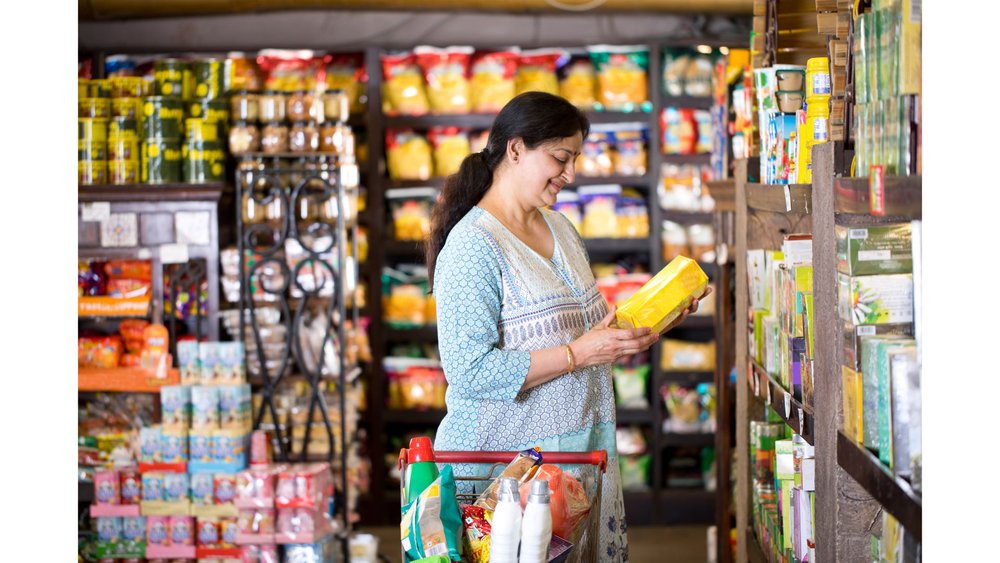
The market demonstrates strong domestic production capacity while facing quality standardization challenges. Companies like Amul dominate through cooperative structures, while international brands target premium urban segments with value-added products.
Japan (10.2% Market Share):
Japan’s USD 42.8 billion market represents high-value positioning with 113.2 kg per capita consumption, the region’s highest. Despite slower 3.2% growth, the market emphasizes quality, innovation, and health functionality, commanding premium pricing across categories.
Advanced technology adoption and strict quality standards create entry barriers while supporting sustainable premium positioning. Domestic brands like Meiji lead innovation in functional dairy products and sustainable packaging solutions.
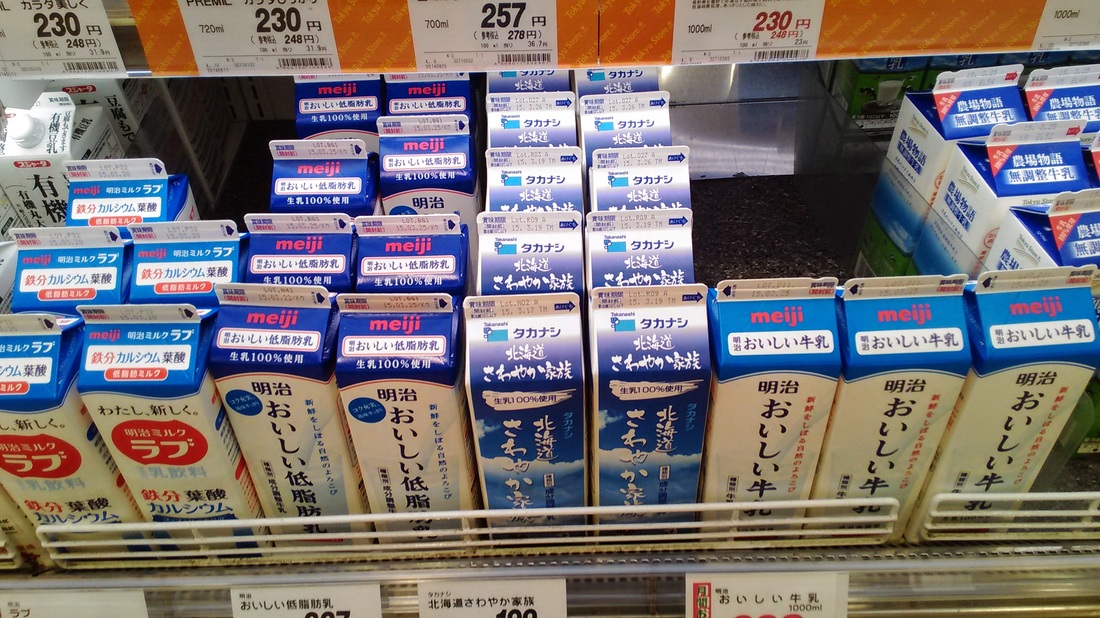
Indonesia (6.6% Market Share):
Indonesia’s USD 27.6 billion market shows strong 6.7% growth supported by population expansion and rising incomes. With 43.1 kg per capita consumption, significant growth potential remains as urbanization and Western dietary adoption accelerate.
Import dependency remains high at 75% of consumption needs, creating opportunities for efficient domestic production expansion. Local brands compete with international players through value positioning and distribution reach.
Vietnam (3.4% Market Share):
Vietnam demonstrates exceptional 9.1% growth reaching USD 14.2 billion market size, driven by rapid economic development and young population demographics. Per capita consumption of 28.7 kg indicates substantial expansion potential as incomes rise.
The market benefits from trade agreements and export-oriented dairy development. Local production capacity expansion supports both domestic consumption and regional export opportunities through competitive cost structures.
1.2. Analysis
a. Tendency and Reasons for Segmentation and Major Zones in Q2 2025
The Q2 2025 performance reveals accelerating market maturation across key Asian economies, with consumption patterns increasingly resembling developed market profiles. China’s emergence as a global dairy powerhouse reflects successful industrialization, quality improvements, and consumer trust building over the past decade.
Regional specialization becomes increasingly pronounced, with China focusing on scale and technology leadership, India leveraging traditional dairy culture and cooperative structures, Japan emphasizing premium innovation, and Southeast Asian markets capturing growth through import substitution and export development.
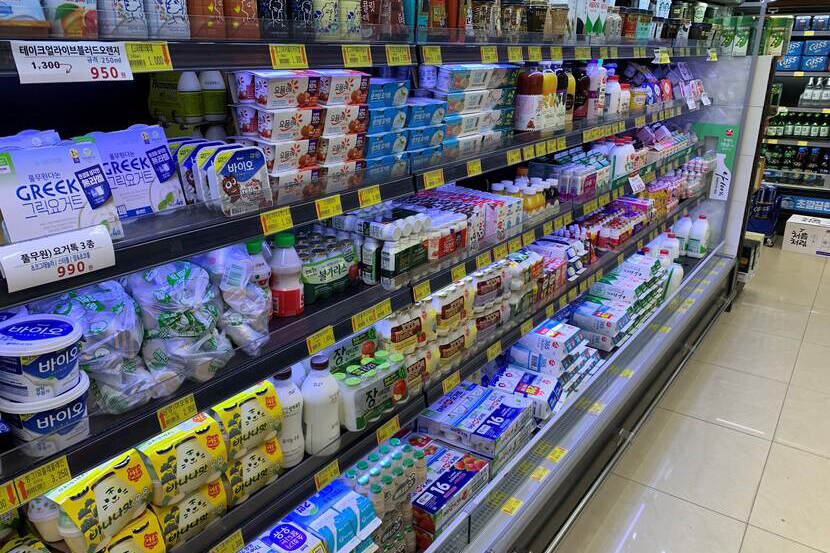
Health consciousness drives premium segment expansion across all regions, with organic products showing 28.4% annual growth and functional dairy achieving 15.2% expansion. This trend reflects rising health awareness, aging populations, and increasing disposable incomes enabling premium purchasing decisions.
b. Natural Impacts
Climate change significantly influences Asian dairy production patterns, with extreme weather events affecting feed availability and milk quality across the region. Monsoon irregularities impact pasture conditions in India, while typhoons and flooding disrupt supply chains in Southeast Asia.
Water scarcity challenges dairy operations across China and India, accelerating adoption of precision irrigation and water recycling technologies. Climate control systems achieve 69% adoption partly in response to temperature volatility affecting animal productivity and milk quality.
Environmental regulations increasingly shape production practices, with carbon emission standards and water usage limits driving technology adoption. The industry’s response through 82% adoption of carbon footprint reduction initiatives demonstrates proactive adaptation to regulatory and market pressures.
c. Economic Impacts
Regional economic growth averaging 5.8% annually provides strong tailwinds for dairy consumption expansion, particularly in developing economies where dairy products represent aspirational consumption categories. Rising middle-class populations across Vietnam, Indonesia, and India create substantial demand growth potential.
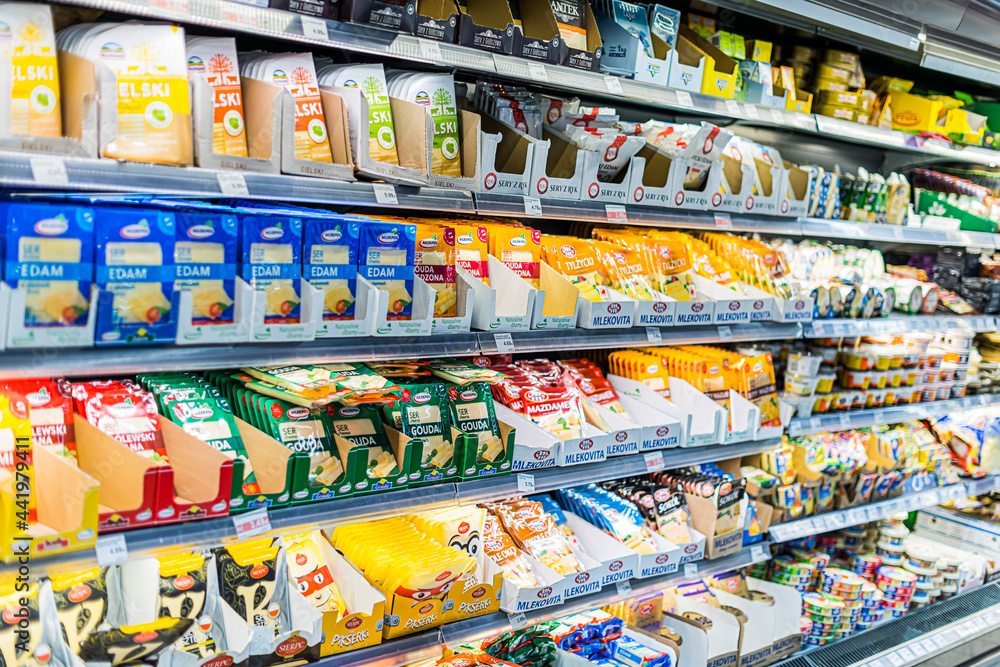
Currency fluctuations significantly impact trade flows and profitability, with USD strength affecting import costs while supporting export competitiveness for local producers. Inflation pressures influence consumer purchasing patterns, driving premiumization among affluent segments while price sensitivity increases in mass markets.
Labor cost increases across manufacturing economies drive automation adoption, with automated processing reaching 52% implementation and precision farming at 61%. These investments improve long-term competitiveness while requiring substantial capital commitments.
d. Behavioral Factors (B2B and B2C)
B2B Market Evolution:
The wholesale and institutional market experiences digital transformation acceleration, with blockchain supply chain systems achieving 42% adoption for traceability and quality assurance. Food service sector expansion drives bulk purchasing and specialized product development for restaurants and food processing applications.
Quality standards and certification requirements increasingly influence B2B procurement decisions, with international certifications commanding premium pricing and preferred supplier status. Sustainability credentials become competitive differentiators in institutional sales.
B2C Consumer Behavior:
Health-focused product demand reaches 78.2% consumer adoption, driving functional dairy innovation including probiotic yogurts, protein-enriched milk, and reduced-sugar options. Premium positioning strategies succeed with 35.4% market penetration despite 35% price premiums.
E-commerce adoption accelerates with 67.3% convenience product penetration, enabling direct-to-consumer relationships and personalized product offerings. Traditional shopping patterns persist with 82.6% adoption, indicating multichannel strategies’ importance for market coverage.
Plant-based alternatives achieve 23.1% consumer trial with explosive 25.7% annual growth, creating both competitive pressure and innovation opportunities for traditional dairy companies seeking hybrid product development.
2. Market Forecast in Q3 & Q4/2025
2.1 Forecast Revenue: Global & Major Zones
Regional Market Projections:
The Asian dairy market is projected to reach USD 431.4 billion in Q3 2025 and USD 444.8 billion in Q4 2025, maintaining the robust 8.36% CAGR trajectory toward the USD 649.57 billion target by 2032.
Country-Specific Forecasts:
China: Expected growth to USD 194.8 billion (Q3) and USD 200.1 billion (Q4), supported by continued urbanization, premiumization trends, and domestic brand strength. New product launches in functional dairy and organic segments drive value-added growth.
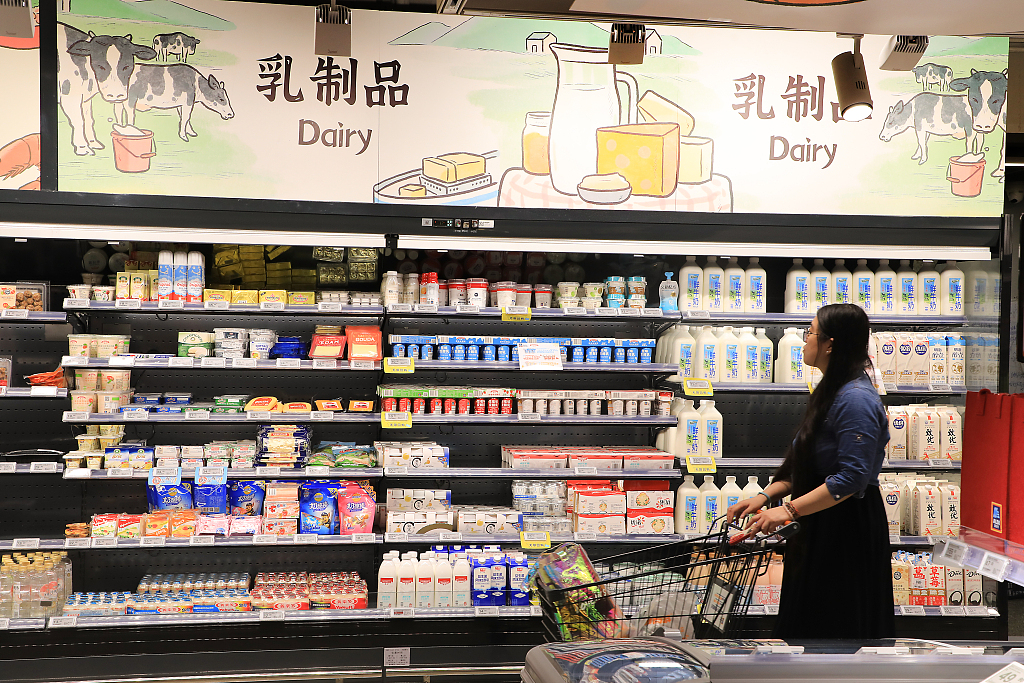
India: Projected expansion to USD 61.8 billion (Q3) and USD 64.0 billion (Q4) with 8.5% CAGR supported by rural market penetration and urban convenience product adoption. Cooperative sector modernization enhances quality and distribution reach.
Japan: Moderate growth to USD 43.2 billion (Q3) and USD 43.6 billion (Q4) with emphasis on value optimization rather than volume expansion. Innovation in senior nutrition and functional products supports premium positioning maintenance.
Indonesia: Strong performance reaching USD 28.1 billion (Q3) and USD 28.7 billion (Q4), driven by population growth, urbanization, and import substitution initiatives. Domestic production capacity expansion reduces import dependency.
Vietnam: Exceptional growth trajectory reaching USD 14.7 billion (Q3) and USD 15.2 billion (Q4) at 9.1% CAGR, supported by economic expansion, young demographics, and increasing dairy consumption adoption.
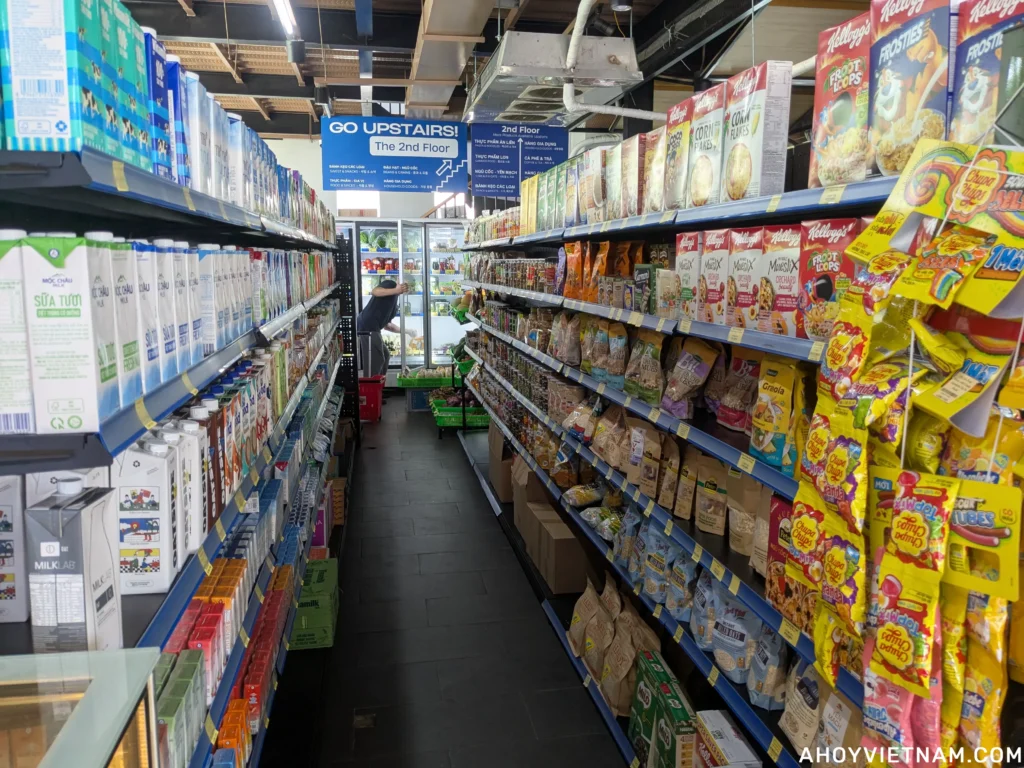
2.2. Analysis
Price trends across Q3 and Q4 2025 indicate continued upward pressure due to feed cost inflation, energy price increases, and quality premiumization. Fresh milk prices are projected to increase from USD 0.85/kg to USD 0.89/kg, while premium cheese categories may reach USD 9.10/kg by Q4.
Seasonal patterns influence Q4 performance positively, with holiday consumption, gift-giving traditions, and festival demand supporting volume and value growth across most categories. Ice cream and dairy desserts show particular strength during Asian holiday seasons.
Supply chain optimization through technology adoption enables cost management despite input price pressures. Digital traceability systems and automated processing help offset labor cost increases while supporting quality premiums and export competitiveness.
Import dependency trends vary by country, with Indonesia and Philippines maintaining high reliance on international suppliers while China and India advance toward greater self-sufficiency through capacity expansion and productivity improvements.
3. Innovations (Trends in Long & Short Term)
3.1. Technology Transformation (Biotechnology; Digital Revolution)
Digital Revolution Leadership:
Asian dairy companies lead global digital transformation with 78% digital traceability adoption and USD 4.2 billion annual investment. Advanced systems integrate IoT sensors, AI analytics, and blockchain verification to ensure quality, safety, and transparency throughout supply chains.
China and Japan spearhead AI quality control implementation at 65% adoption rates, achieving 90% accuracy in defect detection and quality grading. These systems enable consistent product quality while reducing labor dependency and improving operational efficiency.
Biotechnology Advances:
Precision farming technologies reach 61% adoption with USD 5.3 billion investments focused on genetic improvement, nutrition optimization, and disease prevention. Advanced breeding programs enhance milk yields while improving animal welfare and reducing environmental impact.
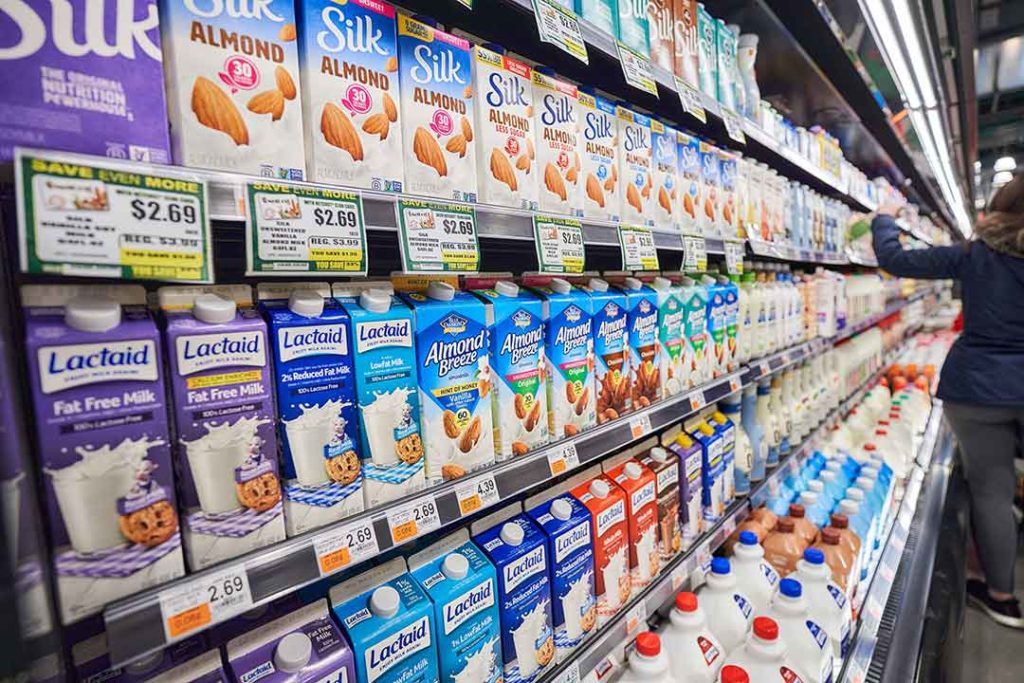
Fermentation technology innovation enables development of functional dairy products with enhanced nutritional profiles, extended shelf life, and improved digestibility. These advances particularly benefit lactose-intolerant populations across Asia where traditional dairy consumption faces physiological constraints.
Automation and Robotics:
Automated processing systems achieve 52% implementation with USD 7.1 billion investments driven by labor shortage pressures and quality consistency requirements. Advanced systems handle packaging, quality control, and logistics with minimal human intervention.
Climate control systems lead technology adoption at 69% implementation, reflecting the critical importance of temperature and humidity management in tropical and subtropical Asian climates. These systems ensure product quality while reducing spoilage and extending distribution reach.
3.2. Environment (ESG; Sustainability; Green Initiatives)
Carbon Footprint Leadership:
Asian dairy companies achieve 82% adoption of carbon footprint reduction programs, leading global sustainability initiatives with USD 6.8 billion annual investments. Advanced methane capture, renewable energy integration, and supply chain optimization deliver measurable emission reductions.
Japan and China lead renewable energy adoption at 45% implementation, utilizing solar panels, biogas systems, and energy-efficient processing equipment. These investments provide both environmental benefits and long-term cost advantages through reduced energy dependency.
Water Conservation Excellence:
Water conservation initiatives reach 71% adoption with USD 4.2 billion investments, critical for regions facing water scarcity challenges. Advanced recycling systems, precision irrigation, and drought-resistant feed crops optimize water usage while maintaining productivity.

China and India lead water management innovation through technology partnerships and government support programs. These initiatives address resource constraints while supporting sustainable production expansion.
Circular Economy Integration:
Waste reduction programs achieve 67% implementation, focusing on packaging optimization, by-product valorization, and supply chain efficiency. Advanced recycling systems convert dairy waste into biogas, fertilizer, and alternative packaging materials.
Sustainable packaging adoption at 38% reflects growing consumer and regulatory pressure for environmental responsibility. Innovation focuses on biodegradable materials, reduced plastic usage, and circular design principles supporting waste minimization.
Local Sourcing Strategies:
Local sourcing initiatives achieve 59% adoption across all countries, reducing transportation emissions while supporting rural economic development. Integrated supply chain management systems optimize procurement, processing, and distribution efficiency.
These programs particularly benefit smallholder farmers through technical assistance, quality premiums, and guaranteed market access, supporting inclusive growth while enhancing supply chain resilience.
4. Strategic Recommendations
Technology Investment Prioritization:
Companies should prioritize digital traceability systems (78% adoption, highest ROI) and AI quality control (65% adoption) as foundational investments enabling premium positioning and export competitiveness. Climate control systems (69% adoption) provide essential infrastructure for tropical market success.
Investment sequencing should emphasize IoT sensors and automated processing for operational efficiency, followed by blockchain supply chain integration for transparency and premium market access. Total technology investment requirements of USD 33.4 billion annually indicate substantial but necessary modernization commitments.
Market Entry and Expansion Strategy:
High-growth markets including Vietnam (9.1% CAGR), India (8.5% CAGR), and Indonesia (6.7% CAGR) present compelling expansion opportunities for domestic and international players. Success requires localized product development, distribution partnerships, and brand building investments.
Premium positioning strategies succeed across developed markets with 35% price premiums achievable through quality, innovation, and sustainability credentials. Mass market penetration requires value engineering, local sourcing, and efficient distribution to achieve competitive pricing.
Sustainability Integration Framework:
Carbon footprint reduction (82% adoption) and water conservation (71% adoption) provide immediate competitive advantages through cost reduction and regulatory compliance. Renewable energy investments (45% adoption) offer long-term cost stability and environmental positioning.
Sustainable packaging development (38% adoption) represents emerging competitive opportunity as consumer and regulatory pressure intensifies. Early adoption enables first-mover advantages while supporting brand differentiation in premium segments.
Consumer-Centric Innovation:
Health-focused products (78.2% consumer adoption, 12.5% growth) represent the highest-potential innovation category, requiring functional ingredient integration, nutritional optimization, and health claim substantiation. Premium positioning (35.4% adoption, 18.3% growth) commands attractive margins for innovative products.
Plant-based alternatives (23.1% adoption, 25.7% growth) create both competitive threats and partnership opportunities. Hybrid product development combining dairy and plant-based ingredients may capture growth while leveraging existing capabilities.
Regional Positioning Strategy:
China requires scale, technology leadership, and local brand development to compete with established domestic players. India benefits from cooperative partnerships, rural market development, and affordable product positioning. Japan demands innovation excellence, quality leadership, and functional product development.
Southeast Asian markets reward distribution efficiency, local taste adaptation, and value positioning. Export-oriented strategies benefit from trade agreement utilization and quality certification achievement.
Risk Management and Resilience:
Supply chain diversification reduces climate risk exposure and ensures consistent product availability across the region’s diverse geographic and climatic conditions. Technology investments in prediction and monitoring systems enable proactive risk management.
Financial hedging strategies protect against commodity price volatility and currency fluctuations that significantly impact import-dependent markets and export-oriented producers. Insurance products and government support programs provide additional risk mitigation options.
5. Conclusion (Key Takeaways)
The Asian dairy products market in Q2 2025 stands as the world’s most dynamic and fastest-growing dairy region, achieving USD 419.3 billion in value while demonstrating exceptional innovation capacity and sustainability leadership. The market’s trajectory toward USD 649.57 billion by 2032 reflects not just economic growth but fundamental transformation in consumer behavior, production technology, and environmental stewardship.
Technology as Competitive Differentiator:
The region’s USD 33.4 billion annual technology investment demonstrates unprecedented modernization commitment, with digital traceability (78% adoption), AI quality control (65%), and climate control systems (69%) providing measurable competitive advantages. Companies achieving comprehensive digital transformation report superior performance in quality consistency, operational efficiency, and export competitiveness.
Sustainability Leadership Global Model:
Asian dairy companies set global benchmarks with 82% carbon footprint reduction adoption and 71% water conservation implementation, supported by USD 22.3 billion annual sustainability investments. These initiatives deliver both environmental benefits and operational cost advantages while positioning companies for increasingly stringent regulatory requirements.
Consumer-Driven Market Evolution:
The convergence of health consciousness (78.2% adoption), premium positioning success (35% price premiums), and plant-based alternative growth (25.7% annually) indicates sophisticated consumer segments driving innovation and value creation. Traditional products (82.6% adoption) demonstrate market stability while premium categories capture value growth.
Regional Competitive Dynamics:
China’s dominance (45.2% share, USD 189.7 billion) reflects successful industrialization and brand building, while India’s growth potential (8.5% CAGR) offers substantial expansion opportunities. Japan’s premium leadership and Southeast Asia’s rapid development create diverse strategic positioning requirements across the region.
Strategic Success Factors:
Market leadership requires integrated strategies combining technology adoption, sustainability initiatives, consumer insight application, and regional positioning optimization. Companies achieving comprehensive digital transformation while maintaining sustainability leadership and consumer relevance will capture disproportionate value in the projected USD 444.8 billion Q4 2025 market.
Investment Imperatives:
The industry’s modernization requires substantial but necessary capital commitments across technology (USD 33.4 billion annually), sustainability (USD 22.3 billion), and market development. Early adopters of digital systems, environmental initiatives, and consumer-centric innovation report superior performance and market positioning.
Future Market Structure:
The Asian dairy market’s evolution toward premium positioning, technology integration, and sustainability leadership creates unprecedented opportunities for companies that successfully navigate traditional consumer preferences while embracing innovation. Success demands acknowledging that technological advancement, environmental responsibility, and consumer insight represent essential competitive requirements rather than optional enhancements.
The market’s exceptional growth trajectory, combined with sophisticated consumer demands and regulatory evolution, positions Asia as the global dairy industry’s innovation center and primary growth engine for the next decade. Companies that integrate operational excellence with technological advancement and environmental stewardship will define the industry’s future while capturing the substantial value creation opportunities ahead.

